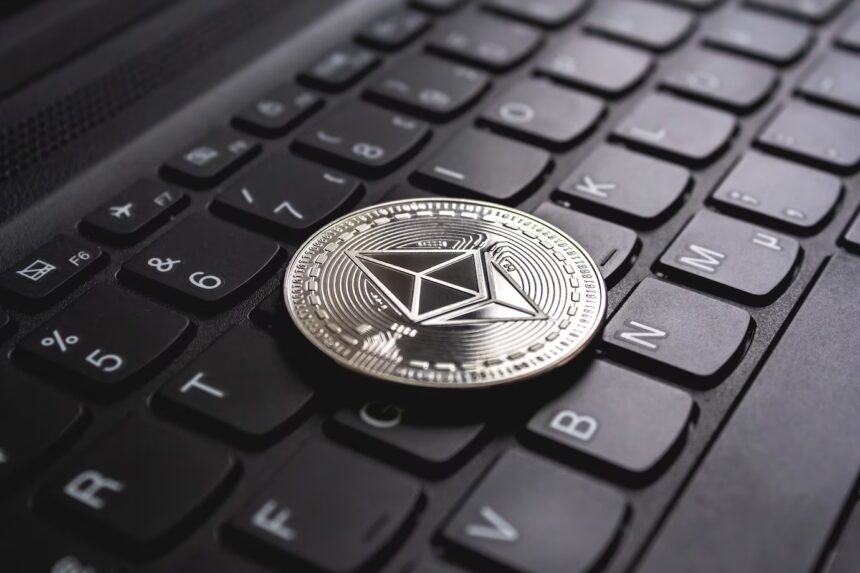In the world of cryptocurrencies and blockchain technology, Ethereum has emerged as a prominent player, offering a platform that goes beyond simple digital currency transactions. With its innovative approach to smart contracts and decentralized applications (DApps), Ethereum has revolutionized the way we think about blockchain and its potential applications. In this article, we will explore the fundamental concepts of Ethereum and delve into its unique features and possibilities.
What is Ethereum? Ethereum, launched in 2015 by Vitalik Buterin, is an open-source blockchain platform that enables the creation and execution of smart contracts. While Bitcoin primarily focuses on peer-to-peer transactions, Ethereum extends the capabilities of blockchain technology by allowing developers to build and deploy decentralized applications on its platform.
Smart Contracts: The Building Blocks of Ethereum At the heart of Ethereum’s functionality are smart contracts. Smart contracts are self-executing contracts with predefined rules and conditions encoded within the blockchain. These contracts automatically execute and enforce the agreed-upon terms without the need for intermediaries. They operate based on a series of if-then statements, ensuring that all parties involved adhere to the predetermined conditions.
Ethereum Virtual Machine (EVM) The Ethereum Virtual Machine (EVM) is a runtime environment that executes smart contracts on the Ethereum network. It is a Turing-complete virtual machine, meaning it can perform any computation that can be expressed algorithmically. The EVM allows developers to write smart contracts in high-level programming languages such as Solidity, and these contracts are then compiled into bytecode that can be executed by the EVM.
Decentralized Applications (DApps) One of the most significant advancements introduced by Ethereum is the concept of decentralized applications or DApps. DApps are applications that run on a decentralized network of computers, utilizing smart contracts as their backend code. These applications are not controlled by any central authority and can be developed to serve a wide range of purposes, from finance and gaming to supply chain management and social networking.
Ethereum’s Token Standard: ERC-20 Ethereum’s token standard, known as ERC-20, has played a crucial role in the growth and adoption of the platform. ERC-20 tokens are digital assets created on the Ethereum blockchain that adhere to a set of rules and standards. These tokens enable developers to create and distribute their own cryptocurrencies or utility tokens, facilitating crowdfunding initiatives through Initial Coin Offerings (ICOs).
Ethereum 2.0: The Transition to Proof of Stake One of the most anticipated upgrades to the Ethereum network is Ethereum 2.0, also known as Eth2 or Serenity. This upgrade aims to address scalability, security, and sustainability concerns by transitioning from the current Proof of Work (PoW) consensus mechanism to Proof of Stake (PoS). Proof of Stake relies on validators who hold and lock up a certain amount of Ether (ETH) as collateral to secure the network. This transition is expected to significantly improve transaction speed and reduce energy consumption.
The Impact of Ethereum Ethereum’s impact extends beyond the realm of cryptocurrencies. Its ability to support decentralized applications has opened up new possibilities in various industries. Decentralized finance (DeFi) has emerged as a significant use case, offering services such as lending, borrowing, and decentralized exchanges, all powered by smart contracts on the Ethereum platform. Additionally, Ethereum has facilitated the rise of non-fungible tokens (NFTs), enabling unique digital assets such as digital art, collectibles, and virtual real estate.
Conclusion Ethereum has positioned itself as a leading blockchain platform, providing developers with the tools and infrastructure to build decentralized applications and execute smart contracts. Its versatility and potential have attracted a vibrant community of developers, entrepreneurs, and enthusiasts who continue to explore the boundaries of what can be achieved with blockchain technology. As Ethereum continues to evolve and adapt with advancements like Ethereum 2.0, its impact on the world of technology, finance, and beyond is poised to grow even further, shaping the future of decentralized innovation.










